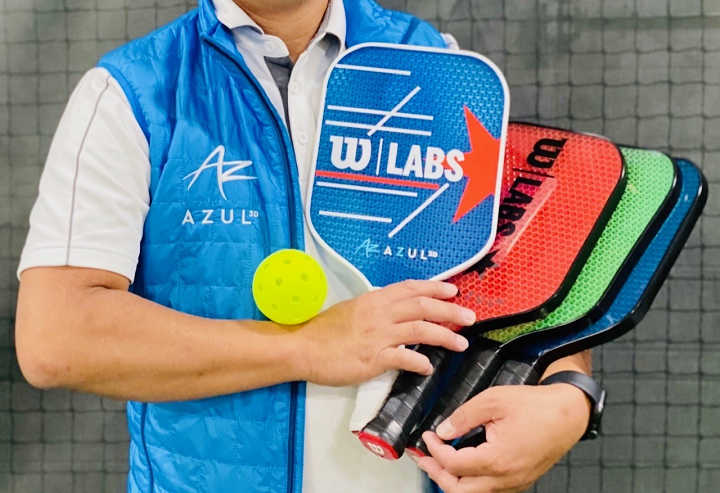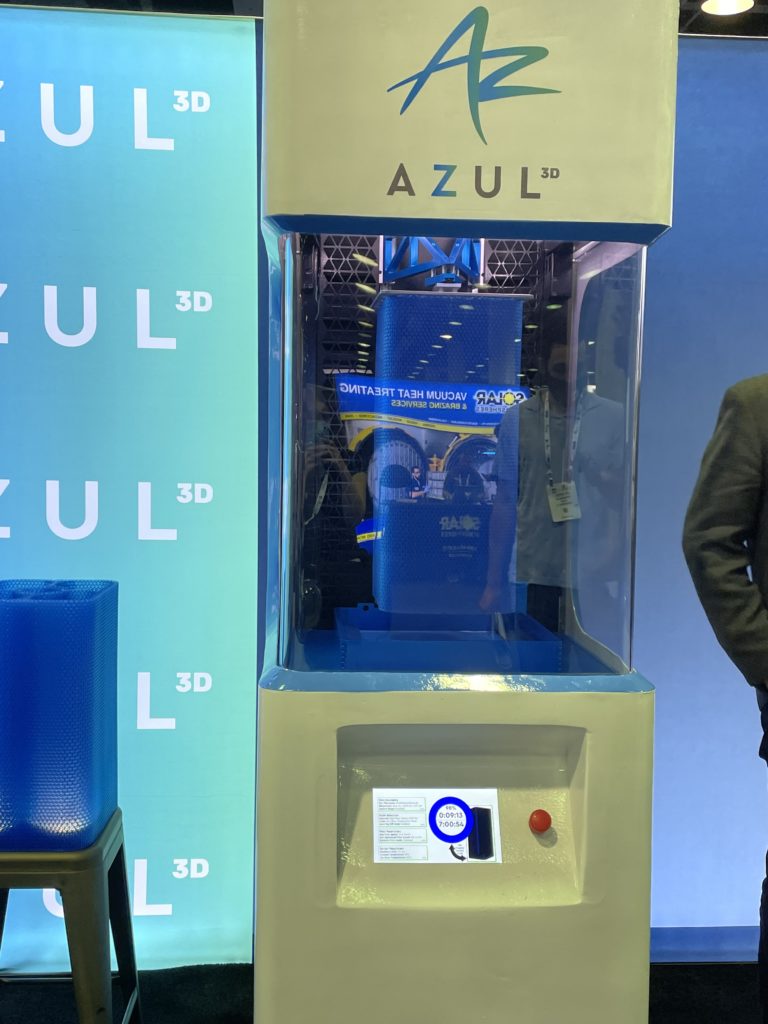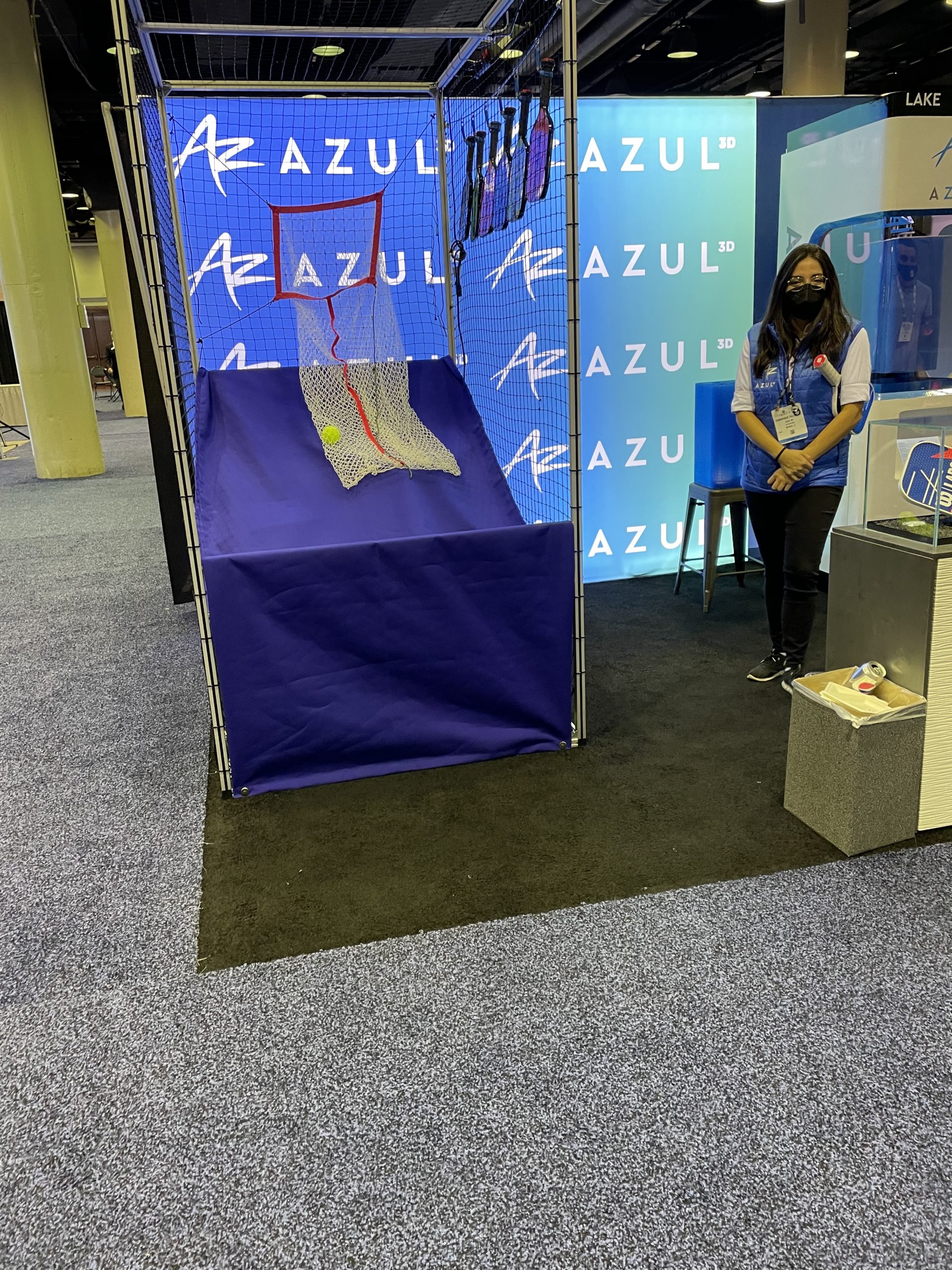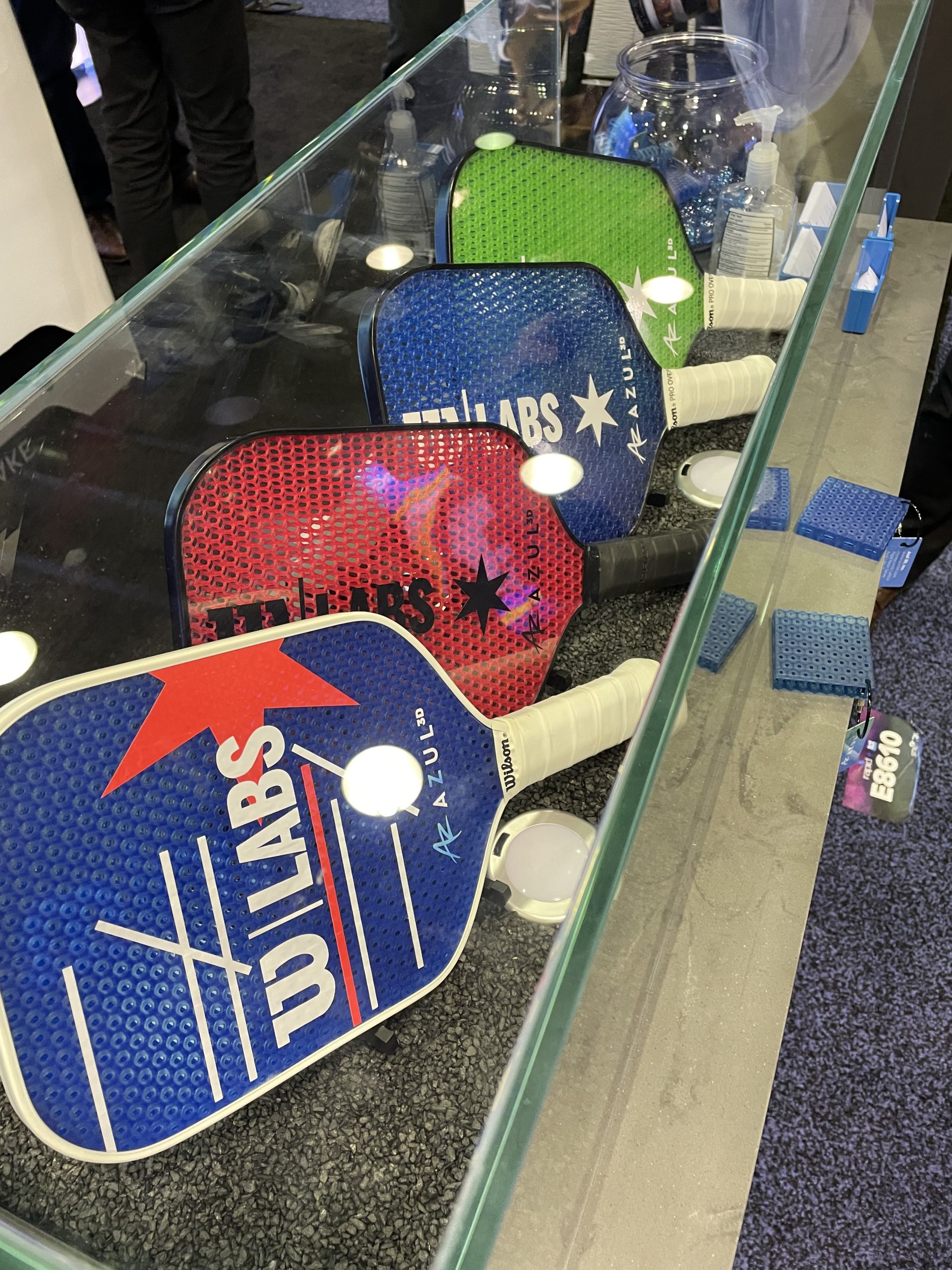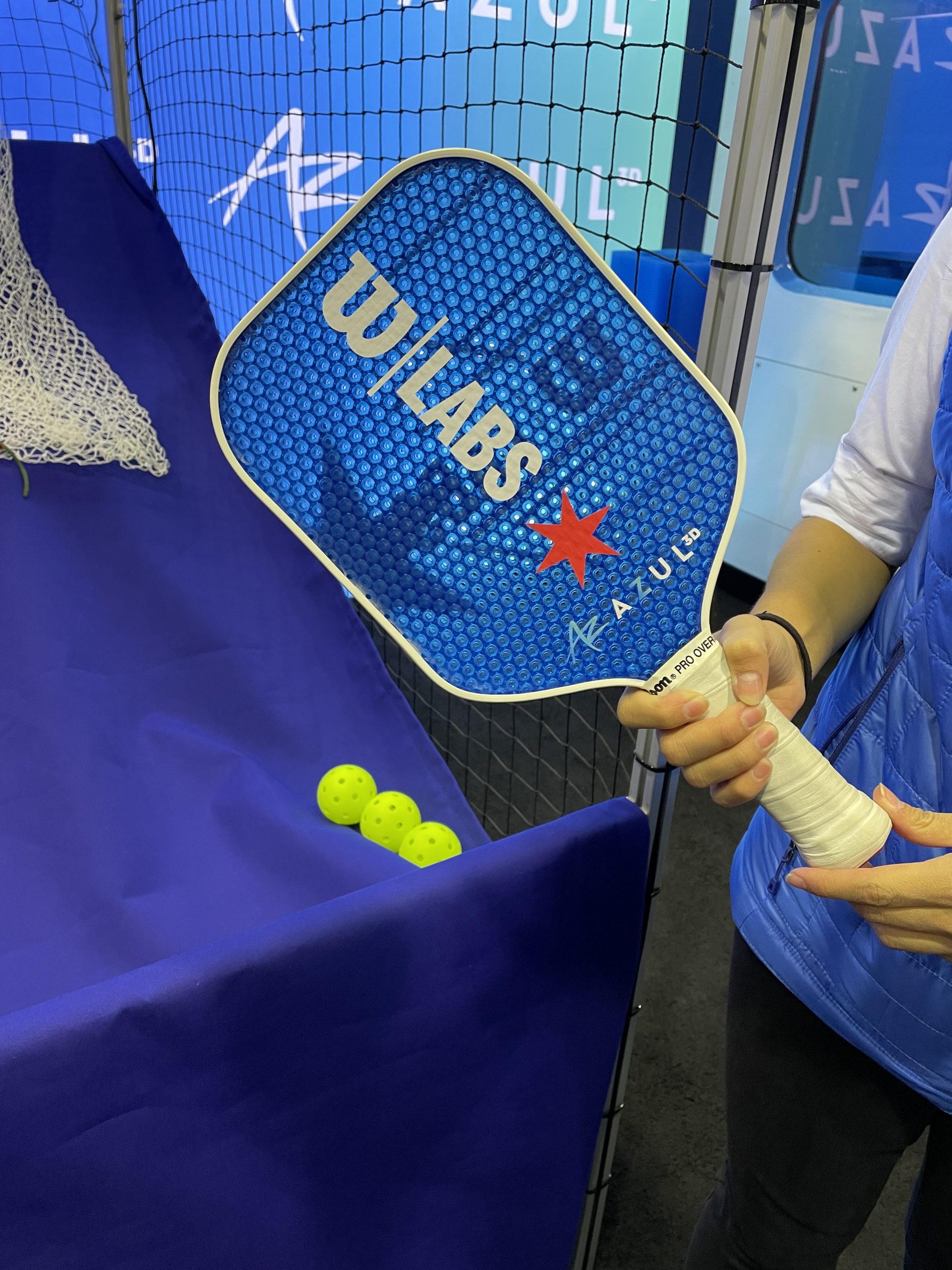While attending RAPID + TCT 2021 in Chicago recently, I happened to meet Cody Petersen, the CEO of 3D printing company Azul 3D, at a happy hour event for Women in 3D Printing. The next day, which happened to be the last day of the show, I had a few minutes open up in my schedule and I decided to stop by the Azul 3D booth and see what the Chicago-based startup was up to during RAPID, and I’m certainly glad I did. The company recently partnered up with Wilson Sporting Goods, also from Chicago, to design and develop two new 3D printed pickleball paddles.
“Pickleball is one of the fastest growing sports in America. We were excited to work with Azul 3D to create a better paddle and better pickleball experience for our customers. We look forward to bringing this paddle to market,” said Bob Thurman, VP of Wilson Labs at Wilson Sporting Goods.
For those of you who, like me, needed a little refresher, pickleball, invented in 1965 by three dads looking to entertain their kids, combines many elements of badminton, tennis, and ping-pong. The sport is played indoors and outdoors on a badminton-sized court, with a slightly modified tennis net, by both singles and doubles using paddles and a plastic ball. Points are scored only by the serving team, and to deliver a good serve, it helps to have a good paddle.
These new paddles by Wilson and Azul 3D have the potential to change how pickleball is played, and it’s all thanks to 3D printing. The first of these two paddles is the Quiet Paddle, which is said to majorly reduce the loud “thwack” sound caused when the paddle makes contact with the ball.
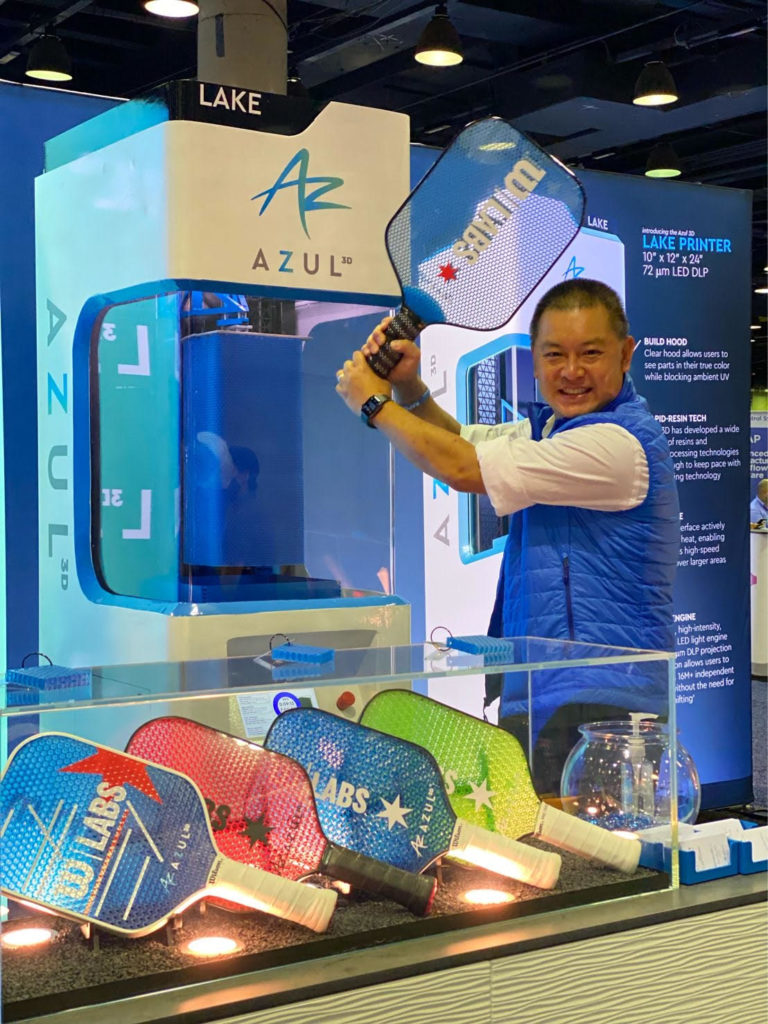
Tuan Tranpham, Chief Revenue Officer for Azul 3D, at the startup’s RAPID booth. Image courtesy of Azul 3D.
This loud noise is apparently a major issue in the sport of pickleball, I’m guessing because of how distracting the noise must be when the paddle hits the ball? Together, Wilson and Azul 3D designed a 3D printed paddle with a 3D lattice to decrease this sound. Just like 2D honeycomb cores in the aerospace industry can cut down on noise levels, this lattice was designed specifically to remove the frequencies that cause these hits to loudly echo around the court.
The second paddle that Azul 3D and Wilson created together is the Custom Core Paddle, which, as the name suggests, is totally customizable to an individual player’s needs. This one also features a lattice core, which makes the traditional pickleball paddle totally tunable. Depending on what specific players want, these cores can be 3D printed using different densities and shapes, which can then achieve things like increasing the punch in one area of the paddle or reducing dead spots.
These 3D printed paddle designs, with their lattice cores, are a great example of how 3D printing can be used to rethink a simple product that you thought couldn’t be changed.
“We partner with companies as a full-stack solution, from material selection and design through implementation in their factories. With Wilson, we not only collaborated to make a better pickleball paddle – we were able to entirely rethink how the paddle is designed, thanks to our materials and technology,” Petersen said.
The two Wilson paddles were printed out of Azul 3D’s proprietary industrial materials, on its flagship LAKE 3D printer, which was on display at RAPID along with the paddles. The startup’s high-area rapid printing (HARP) technology, invented and developed by a research group at Northwestern University, is a proprietary version of stereolithographic printing, and is said to be capable of production speeds, regardless of part size. The technology can print vertically, over large areas, and offers what Azul 3D calls “a throughput dramatically outpacing its competitors.”
When I got to the Azul 3D booth at RAPID, I saw that a net had been set up for visitors to try their hand at the new pickleball paddles, and I was more than willing to take a shot at it. For those who have seen me attempt to play any kind of sport in the past, I’ll kindly ask you to stop laughing…for everyone else, I’ll just say that I was less than successful with the 3D printed paddles. But I still had fun trying! I also had fun watching one of the employees nail an impressive four shots right in a row.
This collaboration between Azul 3D and Wilson is representative of a true local partnership, as they are each based out of Chicago. This, plus the fact that 3D printing helped reduce the number of necessary parts from five to one, gets rid of any supply chain issues.
(Photos by Sarah Saunders for 3DPrint.com, unless otherwise noted)
Subscribe to Our Email Newsletter
Stay up-to-date on all the latest news from the 3D printing industry and receive information and offers from third party vendors.
You May Also Like
Profiling a Construction 3D Printing Pioneer: US Army Corps of Engineers’ Megan Kreiger
The world of construction 3D printing is still so new that the true experts can probably be counted on two hands. Among them is Megan Kreiger, Portfolio Manager of Additive...
US Army Corps of Engineers Taps Lincoln Electric & Eaton for Largest 3D Printed US Civil Works Part
The Soo Locks sit on the US-Canadian border, enabling maritime travel between Lake Superior and Lake Huron, from which ships can reach the rest of the Great Lakes. Crafts carrying...
Construction 3D Printing CEO Reflects on Being Female in Construction
Natalie Wadley, CEO of ChangeMaker3D, could hear the words of her daughter sitting next to her resounding in her head. “Mum, MUM, you’ve won!” Wadley had just won the prestigious...
1Print to Commercialize 3D Printed Coastal Resilience Solutions
1Print, a company that specializes in deploying additive construction (AC) for infrastructure projects, has entered an agreement with the University of Miami (UM) to accelerate commercialization of the SEAHIVE shoreline...



